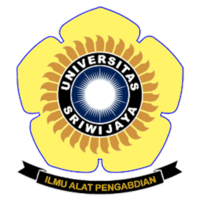Thematic Progression in Thesis Abstracts in Three Related Science Disciplines: Linguistics, Literature, and Language Teaching
Abstract
Full Text:
73-79References
Arikunto, S. 2006.Prosedur Penelitian SuatuPendekatan Praktik. Jakarta: PT rineka Ciptae.
Ary, Jacobs & Seronsen. 2010. Introduction to Research in Education. Canada: Matrix production.
Arsyad, Safnil. 2014. “The Discourse Structure and Linguistic Feature of Research Article Abstracts in English by Indonesian Academics”. ASIAN ESP Journal, Vol.10, issue2, pp: 191-224.
Arysad, Safnil dan Arono. 2018. Memahami dan Menulis Abstrak Artkel Jurnal: Panduan Praktis bagi Mahasiswa dan Dosen. Jakatta: Halaman Moeka.
Belcher, Wendy Laura.2009. Writing Your Journal Article in Twelve Weeks: AGuide Academic Publishing Success. California: SAGE Publication, Inc.
Butt, D., Fahey, R., Feez, S., Spinks, S., &Yallop, C. 2000. Using Functional Grammar: An Explorer’s Guide. Sydney: Southwood Press.
Butt, D. G., Lukin, A. et al. 2004.Grammar—TheFirst Covert Operation of War.’ Discourse Society. 15: 267-290.
Christie, F., & Dreyfus, S. 2007. Letting the Secret Out: Successful Writing in Secondary English. Australian Journal of Language and Literacy, 30(3), 235-247.
Danes, Frantisek. 1974. Functional Sentence Perspective and The Organization of The Text.In Danes, Frantisek (ed.), Papers on Functional Sentence Perspective. Prague: Academia, 106-128.
Eggins, S. 2004. AnIntroduction to Systemic Functional Linguistics. London: Continuum International Publishing Group.
Emilia, E. 2005.A Critical Genre-Based Approach to Teaching Academic Writing in a Tertiary EFL Context in Indonesia. UnpublishedDissertation in Department of Language, Literacy and Arts Education Faculty of Education. Melbourne: The University of Melbourne.
Gay, L.R. 2009.Educational research: Competencies for Analysis and Application. New Jersey: Pearson Education.
Halliday, M. and Mathiessen, M.I.M. 2004. Introduction to Functional Grammar (3rd ed). Oxford: Oxford University Press.
Marfuaty, A, Fitria and Wahyudi, Ribut. 2015. An Analysis of Thematic Progression Patterns: Opinion Section Texts of The Jakarta Post. International Journal of Language Studies 9(3), pp 109-130.
Martin, JR, MIM Christian, Painter Clare. 1997. Working with Functional Grammar. NewYork: Arnold.
Article Metrics
Abstract view : 497 times73-79 - 561 times
Refbacks
- There are currently no refbacks.
